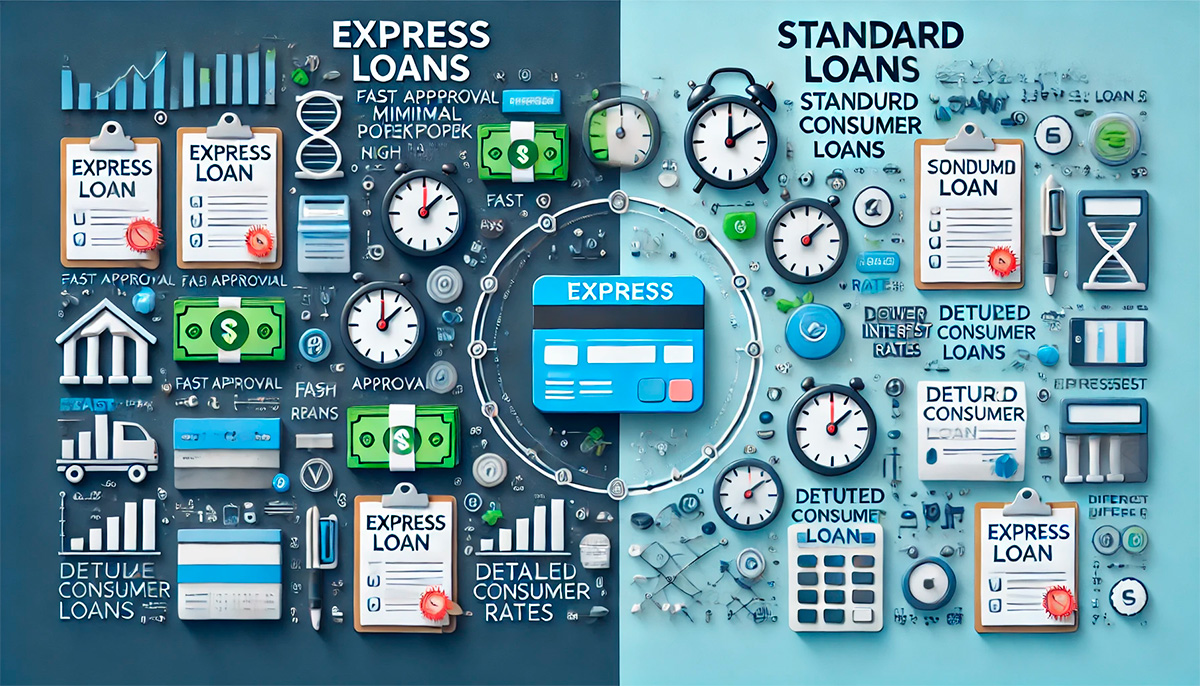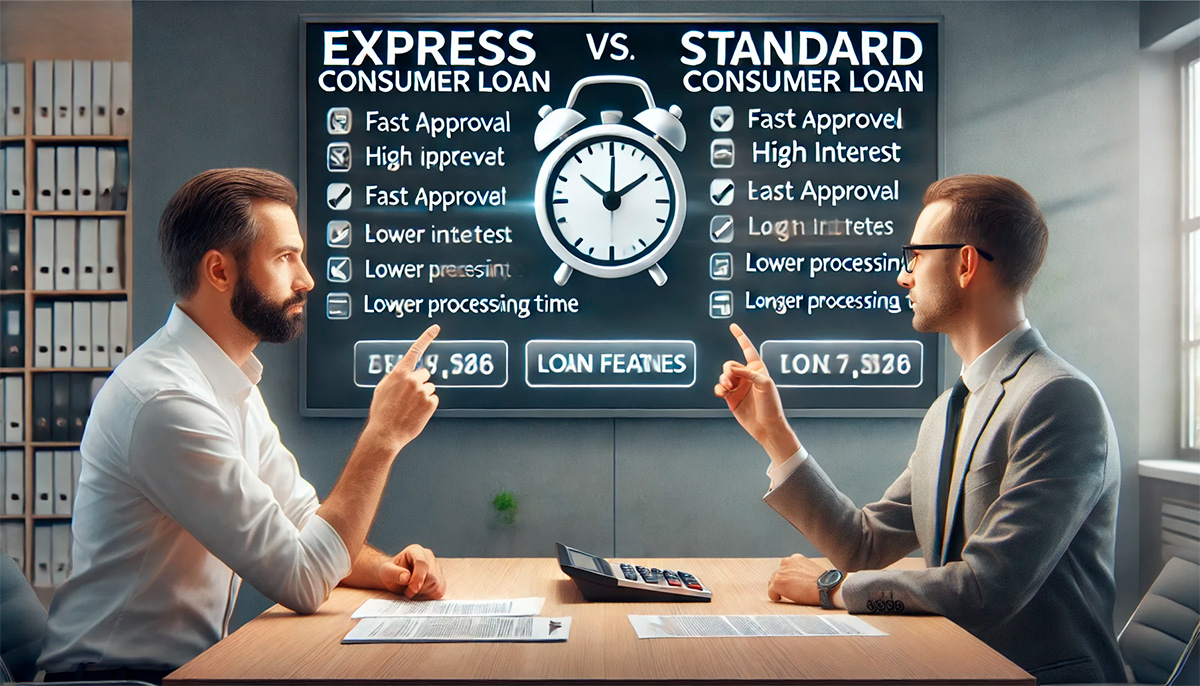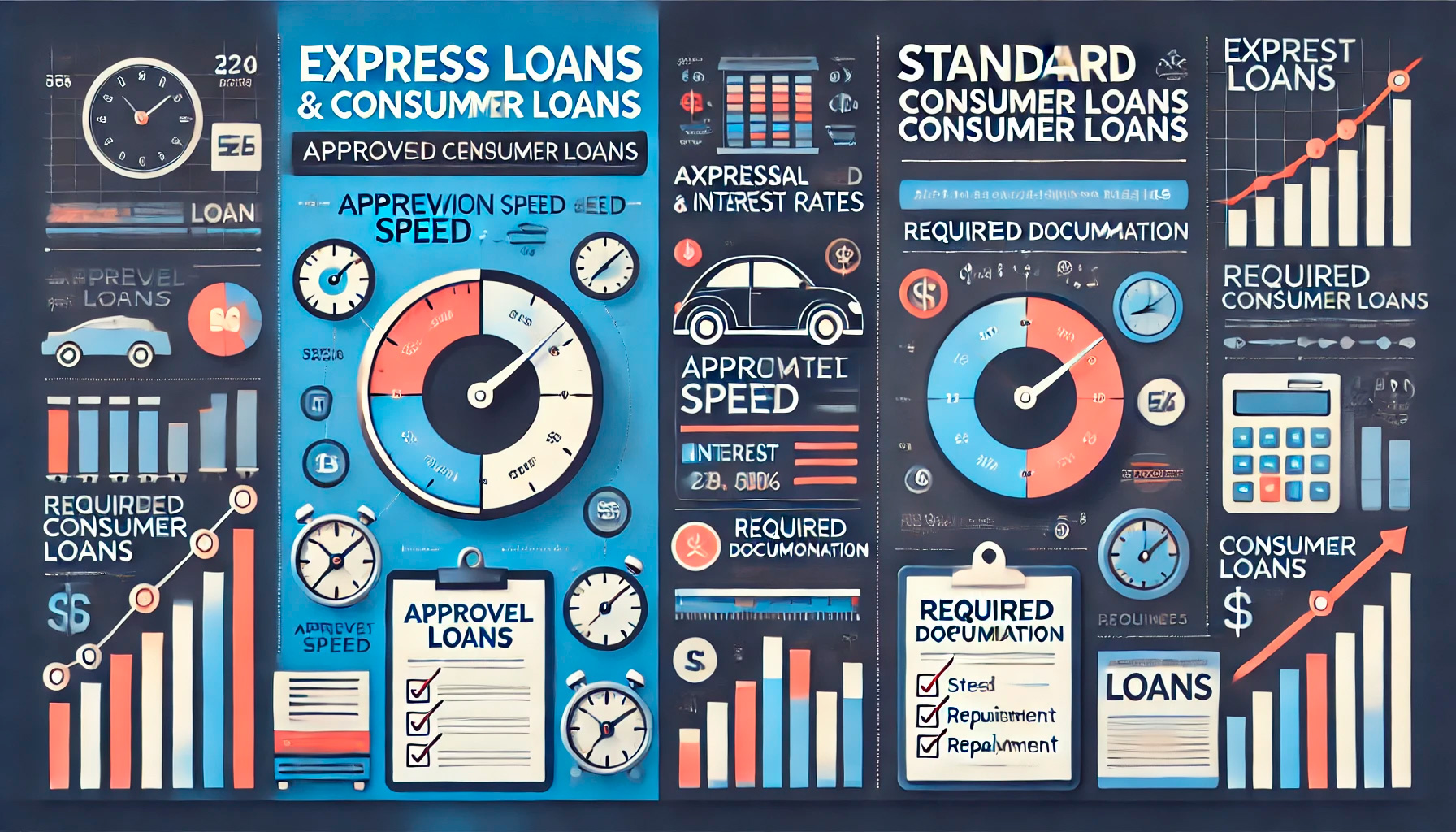In the labyrinth of financial products, loans stand as one of the most versatile tools for managing personal and business finances. Among the myriad options available, two types often spark curiosity and confusion: the express loan and the standard consumer loan. Both serve as lifelines in times of financial need, yet they cater to different circumstances and priorities. Understanding the nuances between an express loan vs. a standard consumer loan can empower you to make informed decisions, ensuring that your choice aligns with your financial goals and timeline.
At first glance, the distinction between these two loan types might seem trivial. After all, both provide access to funds that you can use for various purposes, from consolidating debt to funding a dream vacation. However, the devil, as they say, is in the details. The differences lie in the speed of approval, the amount of documentation required, the interest rates, and the overall flexibility of the loan terms. Let’s delve deeper into these aspects to unravel the true nature of each loan type.
The Need for Speed: Express Loans
Express loans, as the name suggests, are designed for speed. They are the financial equivalent of a fast-food meal—quick, convenient, and satisfying for immediate needs. These loans are tailored for individuals who require funds urgently, often within hours or a single business day. Whether you’re facing an unexpected medical bill, a car repair, or a last-minute travel expense, an express loan can be a lifesaver.
The application process for an express loan is remarkably streamlined. Unlike traditional loans, which may require a mountain of paperwork and a lengthy approval process, express loans often rely on minimal documentation. In many cases, a simple online application form, proof of identity, and a basic credit check are all that’s needed. This efficiency is achieved by leveraging technology and automated systems, which assess your creditworthiness and disburse funds swiftly.
However, this convenience comes at a cost. Express loans typically carry higher interest rates compared to standard consumer loans. Lenders justify these rates by citing the increased risk associated with rapid approvals and minimal vetting. Additionally, the loan amounts for express loans are usually smaller, making them suitable for short-term financial gaps rather than large-scale investments.

The Steady Path: Standard Consumer Loans
On the other end of the spectrum lies the standard consumer loan, a more traditional and methodical approach to borrowing. These loans are ideal for individuals who have the luxury of time and are planning for significant expenses, such as home renovations, education, or purchasing a high-ticket item like a car. The process of obtaining a standard consumer loan is more thorough, involving detailed documentation, a comprehensive credit check, and a longer approval timeline.
One of the key advantages of a standard consumer loan is the lower interest rate. Since lenders have more time to assess your financial health and repayment capacity, they are often willing to offer more favorable terms. Additionally, the loan amounts are generally higher, providing you with the funds needed for substantial projects or purchases. The repayment period is also more flexible, allowing you to spread out your payments over several months or even years.
However, the trade-off for these benefits is the time and effort required to secure the loan. The application process can be cumbersome, involving multiple rounds of verification and approval. For those who need funds urgently, this can be a significant drawback.
Comparing the Two: Key Differences
When comparing an express loan vs. a standard consumer loan, several key differences emerge. The first and most obvious is the speed of approval. Express loans are designed for immediacy, while standard consumer loans prioritize thoroughness and lower risk. This fundamental difference influences every aspect of the loan, from the application process to the interest rates and repayment terms.
Another critical distinction is the level of documentation required. Express loans thrive on simplicity, often requiring only basic information to process your application. In contrast, standard consumer loans demand a more comprehensive set of documents, including proof of income, employment history, and detailed credit reports. This thorough vetting process ensures that lenders can offer lower interest rates and larger loan amounts, but it also means a longer wait time for approval.
Interest rates are another area where these two loan types diverge significantly. Express loans, with their rapid approval and higher risk, come with steeper interest rates. This makes them more expensive in the long run, especially if the loan is not repaid quickly. Standard consumer loans, with their lower interest rates, are more cost-effective for long-term borrowing, making them a better choice for substantial financial needs.

Choosing the Right Loan for Your Needs
So, how do you decide between an express loan and a standard consumer loan? The answer lies in your specific financial situation and needs. If you’re facing an urgent expense and need funds immediately, an express loan might be the right choice. Its quick approval process and minimal documentation can provide the financial relief you need in a pinch. However, be prepared for higher interest rates and ensure that you have a plan to repay the loan promptly to avoid accumulating excessive debt.
On the other hand, if you’re planning for a significant expense and have the time to go through a more detailed application process, a standard consumer loan is likely the better option. The lower interest rates and higher loan amounts make it a more economical choice for long-term financial needs. Additionally, the flexible repayment terms can provide peace of mind, allowing you to manage your finances without feeling overwhelmed.
It’s also worth considering your credit score when choosing between these two loan types. Express loans are often more accessible to individuals with lower credit scores, as the approval process is less stringent. However, this accessibility comes at the cost of higher interest rates. If you have a good credit score, you may qualify for more favorable terms with a standard consumer loan, making it a more attractive option.
Conclusion: A Matter of Timing and Priorities
In the grand scheme of personal finance, the choice between an express loan and a standard consumer loan boils down to timing and priorities. Both loan types have their merits and drawbacks, and the right choice depends on your unique circumstances. Whether you opt for the speed and convenience of an express loan or the stability and affordability of a standard consumer loan, the key is to make an informed decision that aligns with your financial goals.
As you navigate the world of loans, remember that knowledge is power. Understanding the differences between an express loan vs. a standard consumer loan can help you choose the financial product that best suits your needs, ensuring that you can achieve your goals without unnecessary stress or expense. So, the next time you find yourself in need of funds, take a moment to assess your situation, weigh your options, and make a choice that sets you on the path to financial success.

